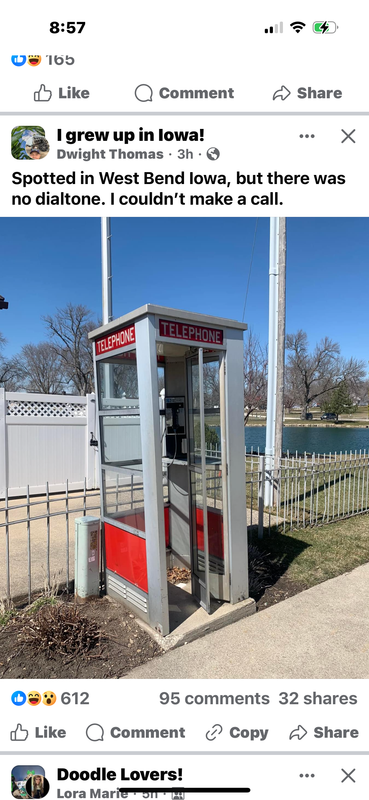- Sep 13, 2002
- 94,227
- 190,889
- 113
Follow along with the video below to see how to install our site as a web app on your home screen.
Note: This feature may not be available in some browsers.
Is someone beta testing ai for message boards.The history of Florida is a rich tapestry spanning thousands of years, from the pre-Columbian era to the present day. Before the arrival of European explorers, Florida was inhabited by indigenous peoples such as the Calusa, Tequesta, and Timucua tribes, who thrived in the region's diverse ecosystems. In 1513, Spanish explorer Juan Ponce de León became the first European to set foot in Florida, claiming the land for Spain and naming it "La Florida" after the Spanish term for "flowery."
Throughout the 16th and 17th centuries, Florida was a key battleground for European powers seeking control of the New World. Spanish settlements such as St. Augustine, founded in 1565, became important outposts in the Spanish Empire's efforts to colonize and convert the indigenous population. However, Florida's strategic location and abundant resources also attracted the attention of other European nations, leading to conflicts with the Spanish and periodic changes in control of the region.
In the 19th century, Florida experienced rapid population growth and economic development fueled by factors such as the arrival of American settlers, the expansion of the railroad system, and the growth of the citrus and cattle industries. The state's warm climate and scenic beauty also made it a popular destination for tourists and winter residents, contributing to the growth of cities like Miami, Tampa, and Jacksonville.
Florida's history has been marked by periods of racial segregation, discrimination, and social unrest, particularly during the Jim Crow era and the civil rights movement of the 20th century. African Americans, Hispanics, and other minority groups faced systemic barriers to education, employment, and political participation, leading to widespread protests and activism aimed at achieving equal rights and opportunities.
Today, Florida is known for its diverse population, vibrant cultural scene, and thriving economy. The state's tourism industry continues to be a major driver of economic growth, attracting millions of visitors each year to its beaches, theme parks, and natural attractions. With its unique blend of history, culture, and natural beauty, Florida remains a dynamic and influential part of the United States.
There's one in Kelley, Iowa as well. Just south of Ames.Can you procure a pic of a still standing phone booth from the Sunshine State?

I assume Doodle Lovers is for @Hawk-A-Doodle-DooCan you procure a pic of a still standing phone booth from the Sunshine State?

There was one on 103rd Street in Jax back in 2016. Not sure if it's still there.
Carabelle rocks.Not too far south from Tallahassee is the world's smallest police station, located in a phone booth in Carabbelle FL.
I’m sure I haven’t been anywhere near 103rd in fifty years.There was one on 103rd Street in Jax back in 2016. Not sure if it's still there.
The West Side is the Best Side.I’m sure I haven’t been anywhere near 103rd in fifty years.
Mama said that was the wrong side of town.
LOL. How many drug deals are done from that one phone?
Southside is the ONLY side.The West Side is the Best Side.
Gross. Although I do love Village Bread and Bagel on Phillips.Southside is the ONLY side.
Eeew. No one goes anywhere on Philips except to Lowe’s or BJ Wholesale. No wonder you think the West side is okay.Gross. Although I do love Village Bread and Bagel on Phillips.
I lived in Oakleaf area from 2011-2015. Then in Neptune Beach from 2018-2020. the only thing on the Southside Was MRI offices, gun ranges and Palatka...and Village Bread.Eeew. No one goes anywhere on Philips except to Lowe’s or BJ Wholesale. No wonder you think the West side is okay.
I lived in Oakleaf area from 2011-2015. Then in Neptune Beach from 2018-2020. the only thing on the Southside Was MRI offices, gun ranges and Palatka...and Village Bread.
Orange Park has a mall though! (also Little Saigon Pho) Or were you a Forrest Reb?I would have went to Oakleaf High if it existed when is was in HS. /csb
I went to OPHS. The mall was definitely a hangout spotOrange Park has a mall though! (also Little Saigon Pho) Or were you a Forrest Reb?
That cupcake store by the movie theatre is legit. I lived at OP Kennel Club for pretty much 5 years of my life.I went to OPHS. The mall was definitely a hangout spot
Oakleaf? 😂 it’s okay. You probably felt at home on Philip’s.I lived in Oakleaf area from 2011-2015. Then in Neptune Beach from 2018-2020. the only thing on the Southside Was MRI offices, gun ranges and Palatka...and Village Bread.
It’s a hangout alright. You keep up with all your gang signs?I went to OPHS. The mall was definitely a hangout spot
It’s a hangout alright. You keep up with all your gang signs?
Most malls were. I’ve been in the OP Mall before when it was safe. Now it’s scary and you do not want to be near the movies there. HS kidsThe mall seemed like a decent spot 20 years ago. ¯\_(ツ)_/¯
Most malls were. I’ve been in the OP Mall before when it was safe. Now it’s scary and you do not want to be near the movies there. HS kids
Looking to fight. With guns.
Came here to post this...it's my retirement home.Not too far south from Tallahassee is the world's smallest police station, located in a phone booth in Carabbelle FL.


